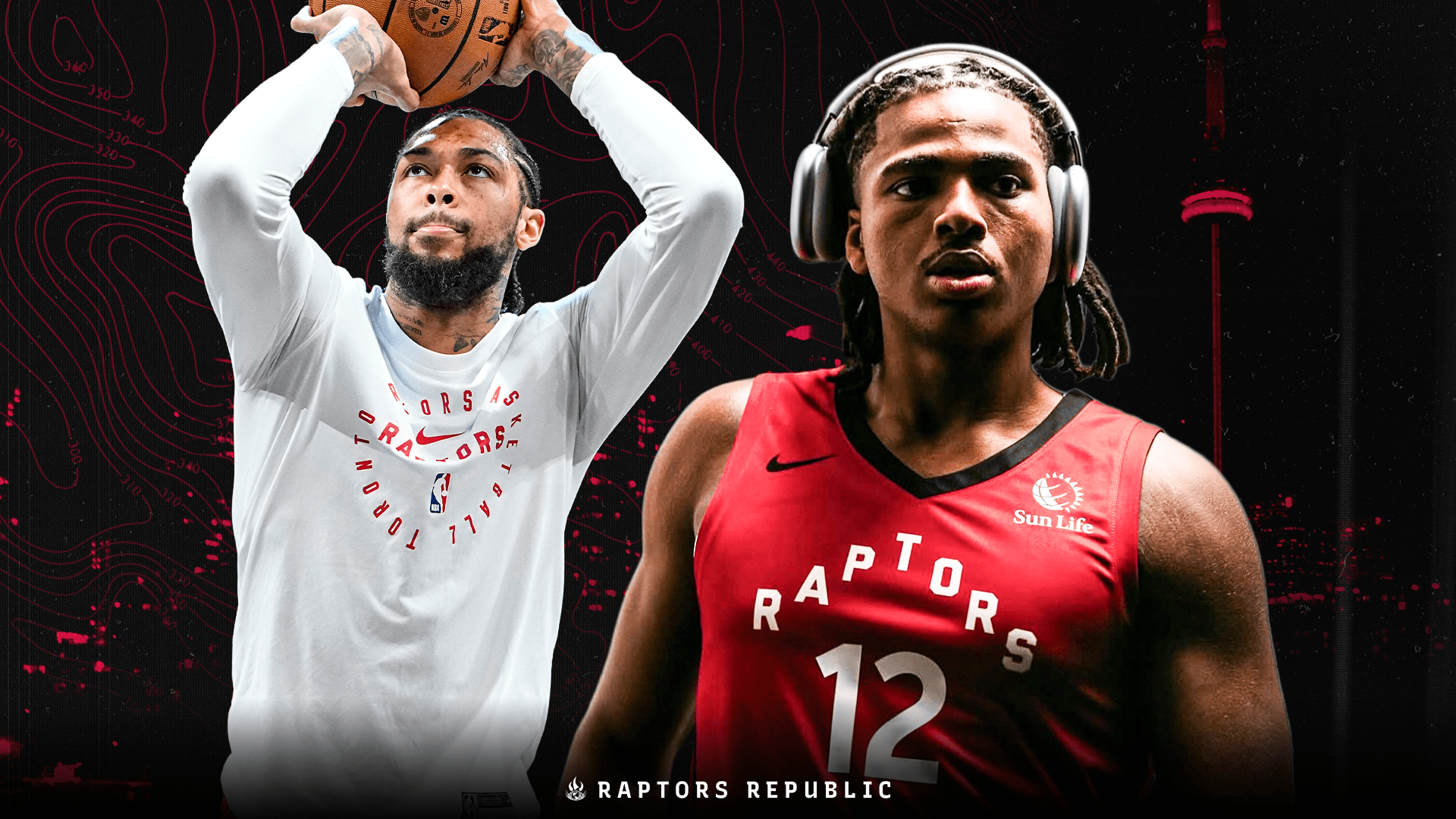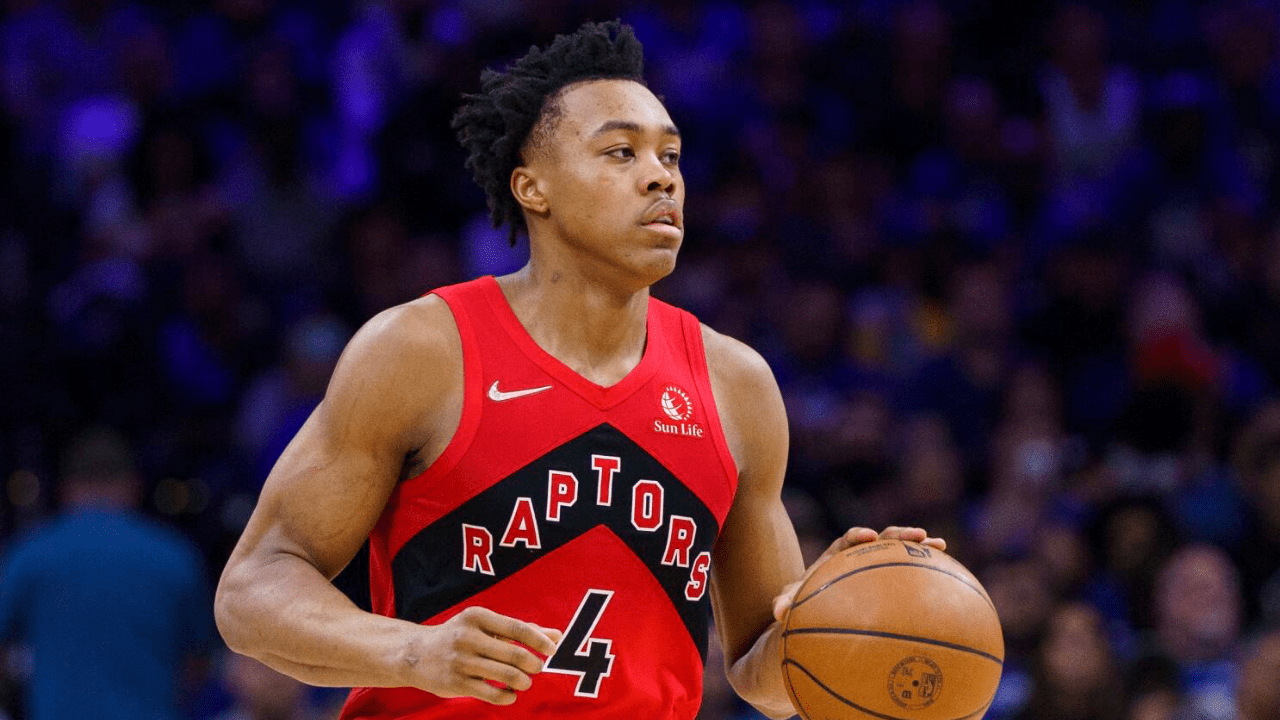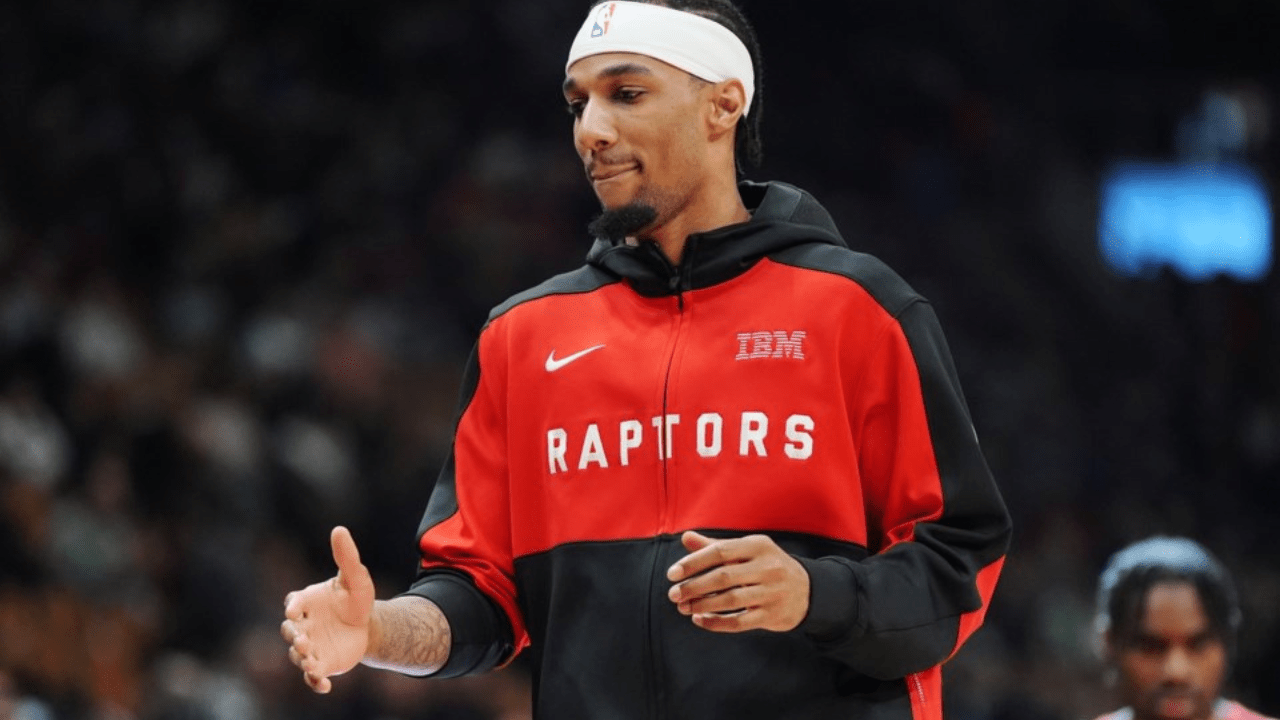An innovative head coach of the Toronto Raptors is trying to win around the edges by hacking the possession game. The front office turns roster imbalance into a supposed strength, doubling down on length and strength and defensive structure while shrugging at the need for individual creation. The point guard is a shooting specialist who perhaps is limited at driving and creating for others, at least when compared to other starting point guards around the league. Positions 2-4 are versatile defenders yet limited when it comes to shooting. There is certainly no shooting from the center spot.
If this description reminds you of either the current Raptors, led by Brandon Ingram and Scottie Barnes, or the last era of the Raptors, led by Fred VanVleet and Pascal Siakam, you’re right. The Raptors are innovating backwards, in the big picture rebuilding the last iteration of the team. Not in the details, but certainly in the strengths and weaknesses.
If there is one lesson from Toronto’s 2025 Summer League performance, it is this: The youths of this team can win, and win big, through defence, but they still lack half-court creators. Just like the big club.
As a result, the wins looked dominant and the loss somewhat flat. Toronto’s offence just couldn’t punch hard enough without a few dozen chances in transition.
Just like the big club.
Here is Toronto’s first-shot (so excluding offensive rebounds) half-court points per chance rank across the league, over the last four seasons: 26, 25, 26, 25. Or league rank for transition frequency over the last four seasons: 2, 2, 1, 3. Outside of Barnes, the roster has entirely turned over in that time, too. You’d be forgiven for not knowing which club was led by Nick Nurse and which by Darko Rajakovic.
Of course, much has changed under Rajakovic. The Raptors pass the ball a huge amount more. They screen and move and cut at far high rates. But the results are largely the same. Limited by long-range shooting, Toronto remains dependent on offensive rebounds and transition buckets.
The last era of the Raptors was led and defined by Pascal Siakam. We at Raptors Republic never took his brilliance for granted. Siakam was one of the best post and isolation players in basketball. When he joined a team with weapons to spare, it resulted in multiple consecutive runs of postseason greatness. He was built for the postseason, in hindsight. The Raptors weren’t built to empower that. They asked far, far too much of him, surrounding him with not enough shooting, not enough driving, and not enough individual creation. The Indiana Pacers checked all those boxes (and, of course, rostered an offensive leader in Tyrese Haliburton who defined every possession).
Now the player who is Toronto’s best individual creator is Brandon Ingram. He likes the same areas of the court as Siakam, is a huge but slim forward who likes the ball in his hands, and enjoys the same playtypes. And outside of him, the Raptors don’t have anyone to hold up the tentpoles of the offence. Barnes has had plenty of chances, and has improved in a number of areas, but still isn’t ready to be the primary engine of a successful half-court offence. Quickley has never been consistently successful in big numbers of isolations, and his drives haven’t unlocked enough for teammates.
Thus in many ways the entirety of the success of this team’s core rests on the shoulders of Brandon Ingram. From this perspective, he is bearing in many ways the same load as Siakam did before him. I am suspicious of whether Ingram can out-perform Siakam in the same role.
To be fair, he has been to the playoffs before. (Not including his awful 2023-24 performance which came on the heels of sitting out 12 consecutive games for injury, returning for the final regular-season game to play 20 minutes, then suiting up in the playoffs clearly not healthy for a sweep.) But in 2021-22, Ingram was spectacular. He scored 27 points a game without seeing a drop from his regular-season efficiency, all while averaging over a point per possessions on isolations, including ones that didn’t result in a shot, turnover, or assist. That has long been his strength; he’s averaged over a point per possession on all such possessions including isolations in the regular seasons of 2022-23, 2023-24, and 2024-25. His possessions on which he’s run a pick and roll have similarly averaged over a point per in the regular seasons of 2022-23 and 2023-24.
His initiation has been quite consistent and efficient in the regular season and in his one healthy stint in the playoffs. He’s used to playing alongside oodles of wings, as he will alongside Barnes, RJ Barrett, and others; in New Orleans, from 2021-22 all the way to 2024-25, Ingram had a higher net rating when alongside both of Herb Jones and Trey Murphy III (plus-6.5) than he did alongside either one individually, or without either. (In fact, the trio all on the court was better than any other permutation of the three.) With CJ McCollum on, the four were even better. Ingram should be ready for the lineup quirks (lots of wings all playing together without a traditional initiating point guard) waiting for him in Toronto.
He can be the shot maker that the Raptors so desperately need. A lot has to go right, but it’s far from impossible. If Ingram carries the water, then the movement and shooting of Gradey Dick and Quickley will click into the place. The passing of Barnes will be unlocked. Everything else will make more sense. But Ingram has to be as good, or better, than he has ever been with the ball in his hands — and far, far better than he’s ever been when he doesn’t have the ball.
And the thing is, a team just won a championship combining winning the possession battle and making the toughest shots available. The Raptors are building a defence that, if not to the same extent as the champion Oklahoma City Thunder, is built on the same principles. Rajakovic has emphasized aggression, high-pickup points, and turnover creation. And during this past Summer League, if you didn’t know the players or see the jersey colours, you really would have been forgiven for thinking the Summer Raptors were the Championship Thunder on the defensive end. The rotations, scrambles, doubles, and full-court aggression was breathtaking. They weren’t facing NBA-caliber players, of course, but the results were the same: turnovers, turnovers, and more turnovers.
Perhaps no one embodies Toronto’s philosophy and future more than Collin Murray-Boyles. Simply by being on the court, he will give Toronto more possessions than its opponents. Defensively, he will have hands in the pockets of his own man, stunt deep into lanes to swipe dribbles and passes, switch to blow up sets, rotate to strip the ball in the paint, and just generally gather deflections at an already elite-for-the-NBA level. Offensively, he is a far better finisher than most of Toronto’s other non-Barnes and non-Jakob Poeltl players. (His lower body strength is terrific, so he can simply go up with the ball without fading away even when guarded by larger men.) And more importantly, he will absorb offensive rebounds.
But he won’t make enough triples, and he may clog the half court, especially as he learns the ropes of the NBA. He is a good driver, and a good passer, but neither he nor the team may be able to weaponize those skills for some time. He certainly won’t solve Toronto’s dearth of individual creation and pull-up shooting.
Murray-Boyles will be an impact player in many ways to the extent that his teammates ameliorate his (current) limitations. I don’t think that will be true for very long, but it should be true for his rookie season. As with so many other players on this roster, Murray-Boyles will need Ingram to carry the offensive load.
Ja’Kobe Walter looked solid in Summer League. He created tons of steals on the defensive end, and his step-back triple was looking smooth. But he couldn’t get his hips past Summer League defenders with the ball in his hands from a stationary beginning. Ochai Agbaji isn’t the defender that Walter already is, and neither is he putting the ball on the floor offensively without an advantage already created for him. Even Barnes could see a far higher shot quality if Ingram ends up taking the lion’s share of isolations (which he loves, and at which he’ll be the best Raptors from Day 1). The Raptors have many players who will depend on Ingram.
It is seemingly intentional that the Raptors have not added a self creator outside of Ingram. The front office has added shooters (theoretical, perhaps, so far) in Dick and Walter. Quickley has plenty of talent, but he has never been the player to boost the offensive output of his teammates by making all their decisions and shots easier. Nor is Jamal Shead at this point in his career, though he certainly personifies defensive aggression. Jonathan Mogbo and Murray-Boyles, though they are very different players, are both better on the defensive end and are currently neither shooters nor self-creators.
Toronto’s defence could be very strong next season. Yes, we’ve all seen the statistic: the Raptors had the second-best defensive rating in the league after the All-Star break. Sure, much of it came against terrible competition. Much of it came with Toronto’s best players on the bench. But the structure was there for success. And Toronto adding Murray-Boyles should help tremendously in his minutes. Shead and Walter should improve on that end from already solid baselines. It’s easy to see a strong defensive foundation. Toronto continues building on those strengths.
The offence could be successful, too. It’s much more of an if. The weaknesses are real, and the Raptors did nothing to address them. Except for the addition of Ingram, of course. But he will have much resting on his shoulders.
The last era of the Raptors floundered (in part) because the front office refused to address the team’s weaknesses and instead continued trying to double down on strengths. That era never saw a player like Ingram added to the core that was already in house. We’ll find out this season whether Ingram will be up to the challenge, or whether this collection of players will, as with Toronto’s last core, find itself no more than a launching pad to Toronto’s next future.



